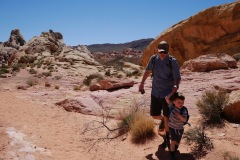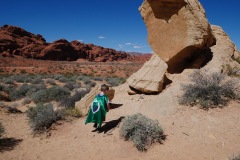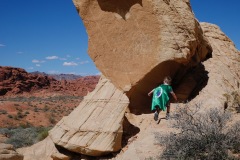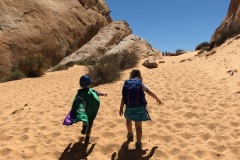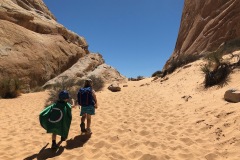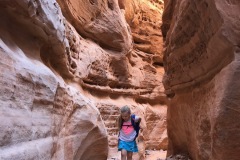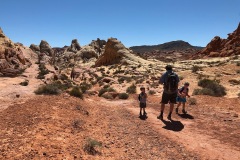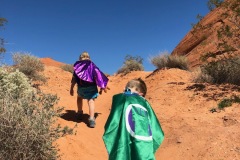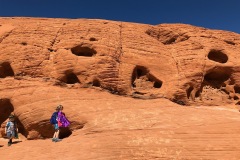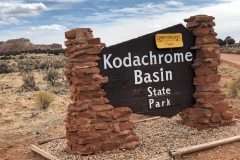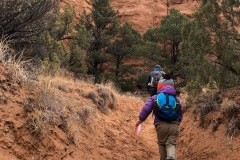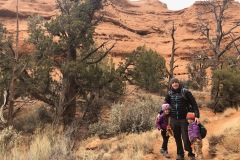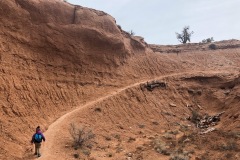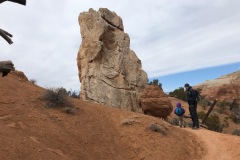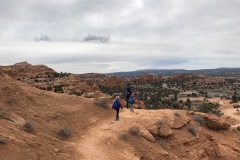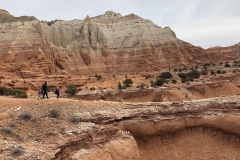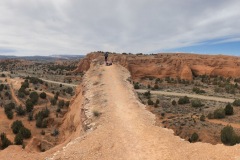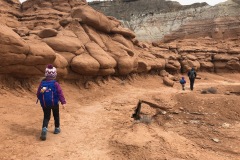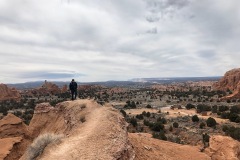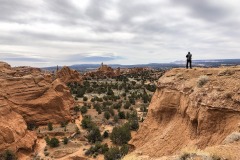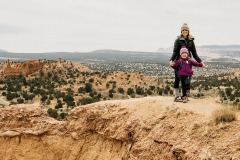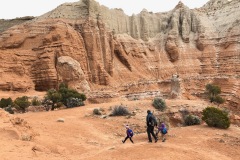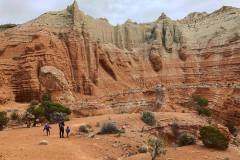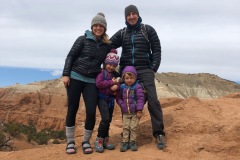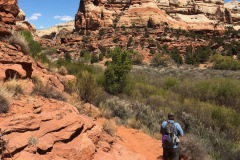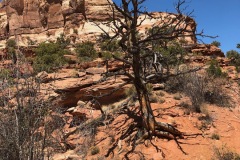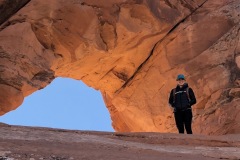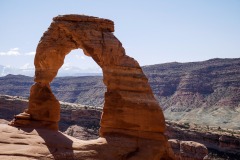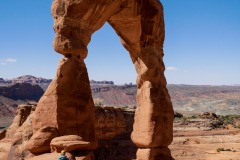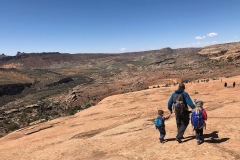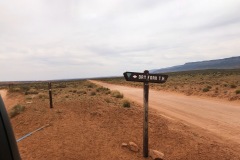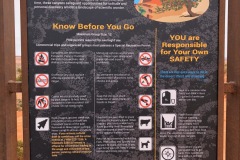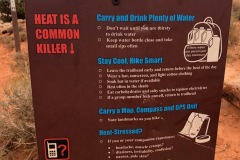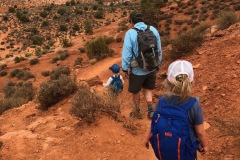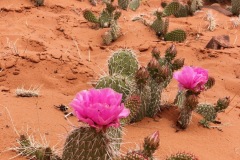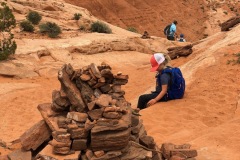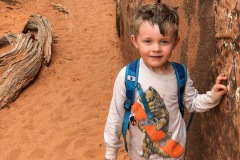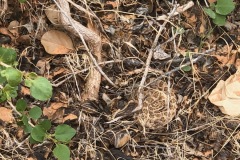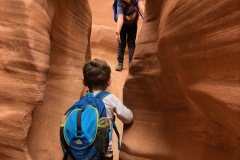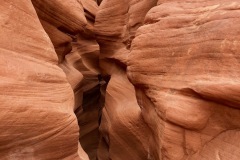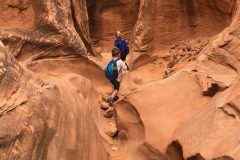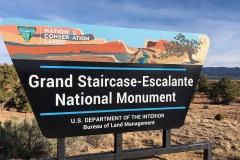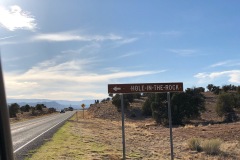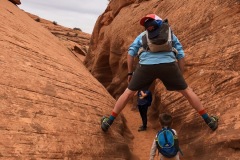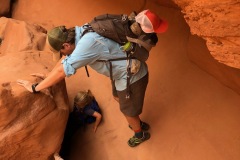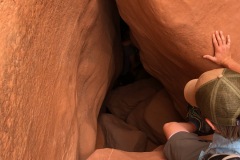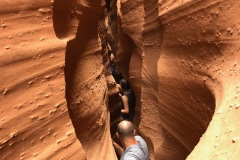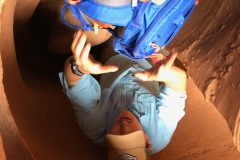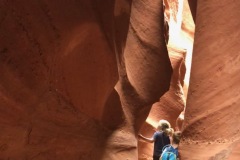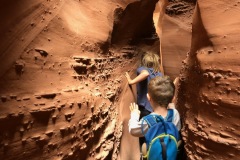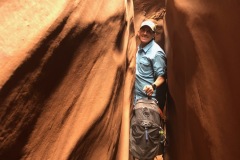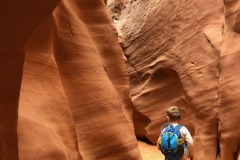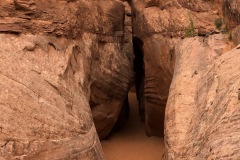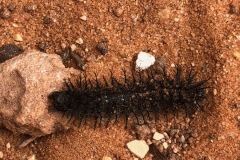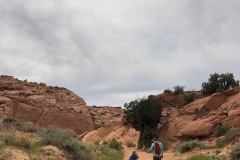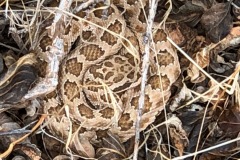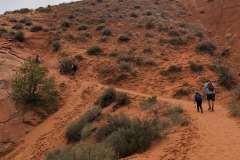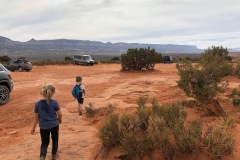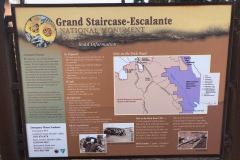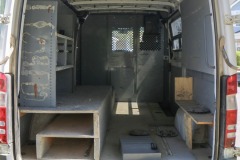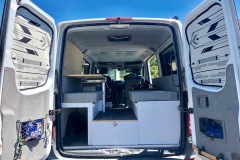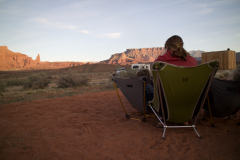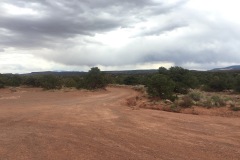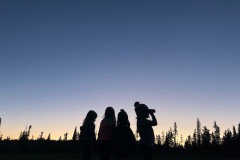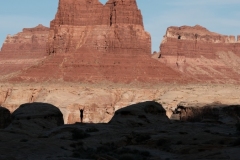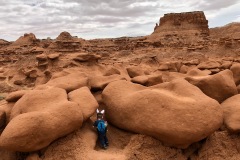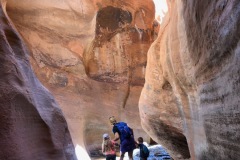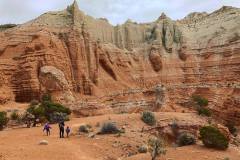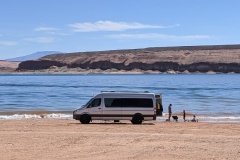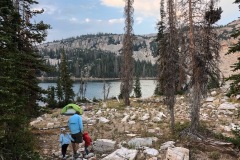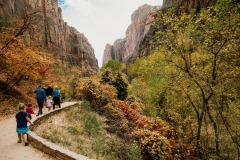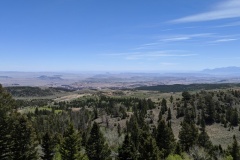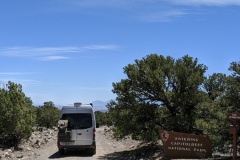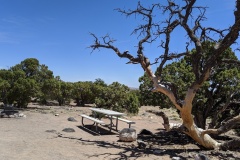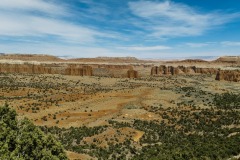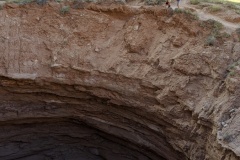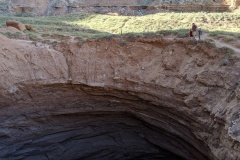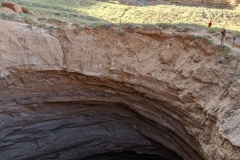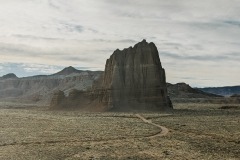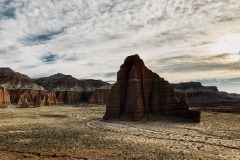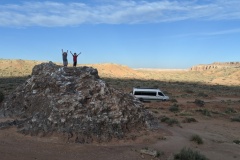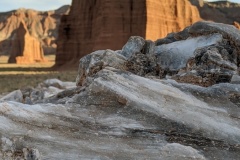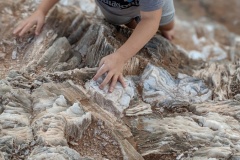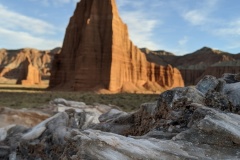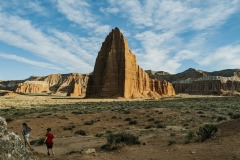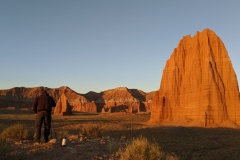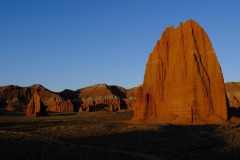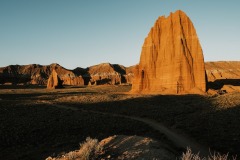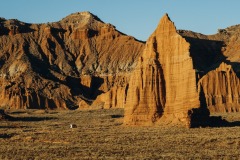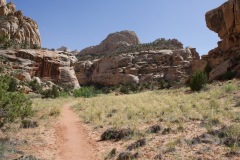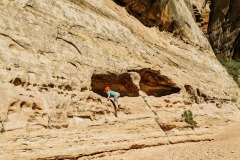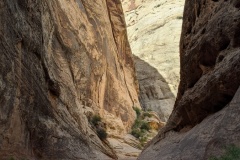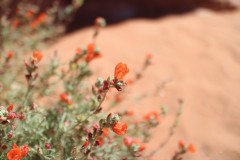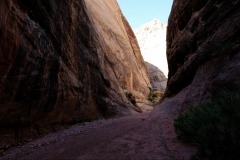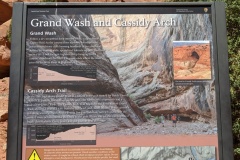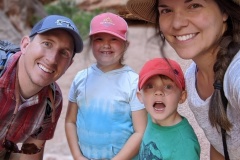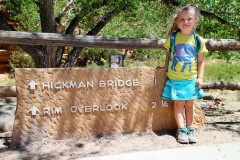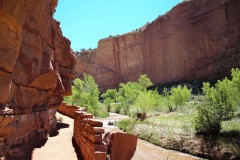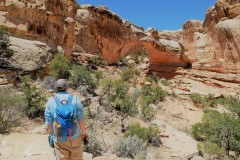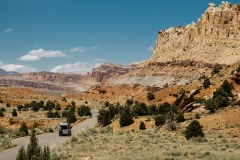This three-miler will give you stellar views and a new perspective of slot canyons in Southern Utah. Spooky is well-named and pretty famous for how dark it gets when deep in a slot, and for the panic-inspiring quality of its extremely narrow walls.
Description
Peek-a-boo is a short slot canyon in the Dry Fork area of the Grand Staircase- Escalante area. Peek-a-boo is not very long, or physically demanding, but it requires some navigational and rock-scrambling skill in order to get through its twists and chutes.
Right off the bat, as visitors begin the trail from the bottom of Dry Fork, they will note the steps carved into the wall that they must climb in order to reach the slot canyon. (About 10 feet)
Unlike many of the Escalante-area slot canyons, Peek-a-Boo and Spooky Gulch require zero technical gear or know-how—although it requires some navigational and rock-scrambling skill. Peek-A-Boo is a slot and corkscrew, and Spooky Gulch is a narrow slot canyon. It is worth noting, due to the restrictive nature of the some of the spaces in Spooky, this canyon is better suited for smaller body types.
LENGTH:
3.5 mile loop
The loop generally takes about 3-4 hours.
TRAIL DETAILS:
Peek-a-boo should be combined with Spooky Gulch to make an awesome loop hike. The recommended route is to actually take Peek-a-boo Gulch first, scrambling north up through its depths, and upon exiting, hiking overland to the east for half a mile until the wide streambed above Spooky Gulch is reached. From there, follow Spooky back down to Dry Fork, and then hike back to the overlook. The total loop route is about 3.5 miles long.
Once out of Peek-a-boo keep hiking (longer than you think you should, most likely) until you come to a juniper tree, then follow the trail and cairns leading to the right and the entrance of Spooky Gulch. Scramble down a mellow rock/sand face to get into the canyon. It soon tightens up, and you’ll be having a good time navigating the confines of this fun canyon.
The opening to Spooky is wide and dark, though it closes up within short order. Only a few hundred feet into the canyon, normal-sized adults will begin having difficulty, as you ascend or descend there are about 2-5ft TIGHT drops and 1 large 10ft drop. (We just handed the kids to one another, and it worked fine.) Sorry, no pictures of this action. I wish I had a hands free @gopro now. Haha
WEATHER
Just make sure you always check the weather report, because this is a flash-flood country, and June, July, and August carry the greatest risk. And while we were in here we were thinking, there’s nowhere to go if the waters came.
COST
Free!
THINGS WE LEARNED:
- You don’t need rope
- Wear SMALL packs for only water and food. There was no way for us to wear packs in Spooky! We had to hand them to each other through tight places.
- Perfect fit for kids, and yes they CAN do it!
LOCATION
The Grand Staircase–Escalante National Monument down Hole in the Rock Road (a 29 mile washboard road)
DIRECTIONS
In order to reach the trail, you must drive the 26.3 miles down Hole-in-the-Rock Road off of Highway 12, until you find the Dry Fork Road, heading northeast into the desert. The Dry Fork turnoff branches after only a few hundred yards and visitors need to stay left in order to reach the Dry Fork overlook. There is a parking lot at the end of the Dry Fork road.
The entire route from Highway 12 is an extremely rugged washboard road with sand traps and the occasional rut. Though vans and cars can tackle the route, a high clearance vehicle with decent suspension is recommended.
Make sure you have a full tank of gas and lots of water as there are no amenities down this rough dirt road.
GPS COORDINATES
Dry Fork Turnoff (37.466336, -111.223912)
Dry Fork Overlook (37.476527, -111.220234)
TRAILHEAD: (37.476782, -111.220040)
Peek-a-boo Gulch Entrance: (37.481407, -111.216655)
Spooky Gulch Bottom (37.481151, -111.209235)
GEAR CLOTHING WE NEEDED
.
PEEK-A-BOO GULCH GALLERY
SPOOKY GULCH GALLERY
BACK TO:
RECENT POSTS:





